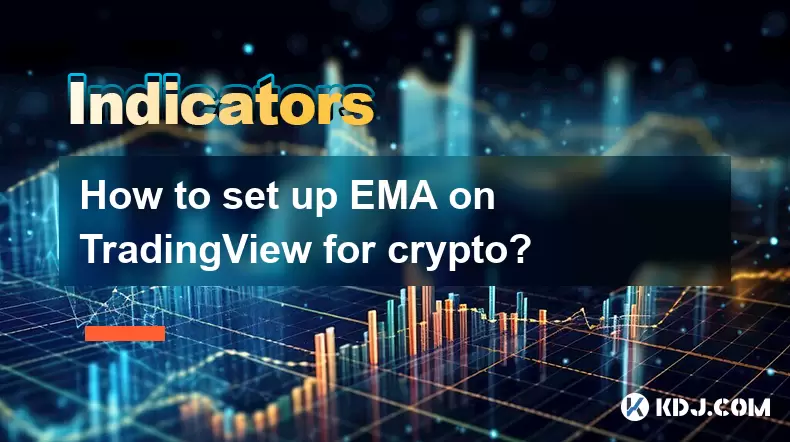-
 Bitcoin
Bitcoin $118,698.3676
0.16% -
 Ethereum
Ethereum $3,428.4877
5.97% -
 XRP
XRP $3.2496
9.52% -
 Tether USDt
Tether USDt $1.0002
0.00% -
 BNB
BNB $725.6930
4.36% -
 Solana
Solana $174.8923
4.52% -
 USDC
USDC $0.9997
-0.02% -
 Dogecoin
Dogecoin $0.2139
6.02% -
 TRON
TRON $0.3155
4.62% -
 Cardano
Cardano $0.8045
7.12% -
 Hyperliquid
Hyperliquid $46.6582
-1.72% -
 Stellar
Stellar $0.4676
0.80% -
 Sui
Sui $4.0143
0.38% -
 Chainlink
Chainlink $17.1546
2.97% -
 Hedera
Hedera $0.2458
3.27% -
 Bitcoin Cash
Bitcoin Cash $496.5967
-0.06% -
 Avalanche
Avalanche $22.8813
3.13% -
 Shiba Inu
Shiba Inu $0.0...01439
3.42% -
 UNUS SED LEO
UNUS SED LEO $8.8389
0.42% -
 Toncoin
Toncoin $3.2113
2.82% -
 Litecoin
Litecoin $101.2646
4.24% -
 Polkadot
Polkadot $4.2262
2.32% -
 Monero
Monero $340.4295
2.92% -
 Pepe
Pepe $0.0...01365
2.92% -
 Uniswap
Uniswap $8.9702
-2.78% -
 Bitget Token
Bitget Token $4.7675
2.00% -
 Dai
Dai $0.9998
-0.02% -
 Ethena USDe
Ethena USDe $1.0003
-0.04% -
 Aave
Aave $324.6394
-2.11% -
 Bittensor
Bittensor $433.6051
-0.88%
How to set up EMA on TradingView for crypto?
The Exponential Moving Average (EMA) helps crypto traders spot trends and reversals by prioritizing recent prices, making it ideal for volatile markets like Bitcoin and Ethereum.
Jul 17, 2025 at 02:14 pm

Understanding EMA and Its Relevance in Crypto Trading
The Exponential Moving Average (EMA) is a widely used technical indicator that helps traders identify trends by smoothing out price volatility. In the context of cryptocurrency trading, where market movements can be extremely rapid, EMA provides a more responsive average compared to the Simple Moving Average (SMA). This responsiveness makes it especially valuable for traders looking to enter or exit positions quickly.
Unlike SMA, which assigns equal weight to all data points within a specified period, EMA gives more weight to recent prices, making it highly sensitive to changes in momentum. This characteristic allows crypto traders to detect early trend reversals or confirm ongoing trends with greater accuracy.
Accessing TradingView and Selecting a Cryptocurrency Chart
Before adding EMA to your chart, you must first log into your TradingView account. If you don’t have one, sign up for free at tradingview.com. Once logged in, navigate to the Crypto section by clicking on the "Markets" tab and selecting "Cryptocurrencies."
From the list of available cryptocurrencies, choose the asset you want to analyze. Clicking on its symbol will open a new chart window. Ensure the chart is set to your preferred timeframe (e.g., 1-hour, 4-hour, daily) based on your trading strategy.
Adding the EMA Indicator to Your Chart
To add EMA, locate the "Indicators" button at the top of the chart interface and click it. A dropdown menu will appear. Type "EMA" in the search bar, and the Exponential Moving Average indicator should appear in the results.
Click on "Add to Chart" to apply it. By default, TradingView sets the EMA to a 9-period setting. However, you can customize this by clicking on the settings icon next to the indicator name in the chart legend.
In the settings panel, adjust the length parameter to match your trading style. Short-term traders often use 12 or 20 periods, while long-term traders may opt for 50 or 200 periods. You can also change the color and line style for better visibility against your chart background.
Customizing Multiple EMAs for Signal Confirmation
Many crypto traders use multiple EMAs simultaneously to generate crossover signals. A popular setup involves using two EMAs: a short-term EMA (e.g., 9-period) and a long-term EMA (e.g., 21-period).
To add another EMA, repeat the steps above. After adding both EMAs, observe how they interact:
- When the shorter EMA crosses above the longer EMA, it may signal an uptrend.
- Conversely, when the shorter EMA crosses below the longer EMA, it could indicate a downtrend.
These crossovers are not foolproof but serve as useful tools when combined with other forms of analysis like volume or support/resistance levels.
For instance, if Bitcoin’s 9-period EMA crosses above its 21-period EMA during a period of rising volume, it strengthens the bullish case for entering a long position.
Applying EMA Across Different Timeframes
One of the strengths of EMA is its flexibility across various timeframes. For day traders, applying EMA on 1-minute or 5-minute charts can help capture quick moves. Meanwhile, swing traders might rely on 1-hour or daily charts to assess broader trends.
To switch timeframes:
- Click on the time interval dropdown located near the top-left corner of the chart.
- Choose intervals such as 1 minute (1m), 15 minutes (15m), 1 hour (1h), or 1 day (1D).
Each timeframe reveals different insights. It's common practice to align multiple timeframes—for example, checking a 1-hour chart for trend direction before diving into a 15-minute chart for entry timing.
When analyzing Bitcoin or Ethereum, aligning EMA signals across these timeframes can enhance decision-making and reduce false signals.
Using EMA in Conjunction with Other Indicators
While EMA is powerful on its own, combining it with other indicators can significantly improve trade accuracy. Traders often pair EMA with:
- Relative Strength Index (RSI): Helps identify overbought or oversold conditions.
- MACD (Moving Average Convergence Divergence): Confirms momentum shifts.
- Volume: Validates the strength behind price movements.
For example, if Ethereum’s EMA shows a bullish crossover, and RSI is just crossing above 50 from oversold territory, it reinforces the likelihood of a strong upward move.
Additionally, placing horizontal support and resistance lines alongside EMA can help determine whether a breakout or pullback is likely.
Frequently Asked Questions
Q: Can I save my EMA settings for future use?
Yes, after customizing your EMA parameters, click on the "Save Template" option under the chart settings. This allows you to reuse the same configuration across different cryptocurrency charts without reconfiguring each time.
Q: How do I remove EMA from my chart?
To remove EMA, click on the "Indicators" button, find Exponential Moving Average in the list, and click the trash icon next to it. Alternatively, right-click on the EMA line directly on the chart and select "Delete Indicator."
Q: Is EMA better than SMA for crypto trading?
EMA reacts faster to recent price changes, which can be beneficial in volatile markets like crypto. However, this sensitivity can also lead to more false signals. Traders often compare both to see which performs better in their specific strategies.
Q: Can I use EMA for altcoin trading?
Absolutely. EMA works well with any tradable asset, including altcoins like Solana, Cardano, or Dogecoin. Just ensure you're adjusting the EMA length and timeframe according to the coin’s volatility and your trading goals.
Disclaimer:info@kdj.com
The information provided is not trading advice. kdj.com does not assume any responsibility for any investments made based on the information provided in this article. Cryptocurrencies are highly volatile and it is highly recommended that you invest with caution after thorough research!
If you believe that the content used on this website infringes your copyright, please contact us immediately (info@kdj.com) and we will delete it promptly.
- Crypto Market, Bull Market, and Policy: Navigating Trump's 'Crypto Week' Rollercoaster
- 2025-07-18 01:50:12
- Winning Design: Nine-Year-Old's Art Becomes a Chocolate Coin!
- 2025-07-18 01:10:12
- Penguin Power, BlockDAG Boldness, and Uniswap's Upswing: Decoding Crypto's Latest Moves
- 2025-07-18 01:50:12
- Bitcoin, Market Cap & Strategy: Decoding the Crypto Game in 2025
- 2025-07-18 01:10:12
- Plume and Colb Finance: Tokenizing Pre-IPO Equities for the Blockchain Era
- 2025-07-18 00:35:12
- Web3, Privacy, and Deflation: A New Era of Profitable Privacy?
- 2025-07-18 01:55:12
Related knowledge

Advanced RSI strategies for crypto
Jul 13,2025 at 11:01am
Understanding the Basics of RSI in Cryptocurrency TradingThe Relative Strength Index (RSI) is a momentum oscillator used to measure the speed and chan...

Crypto RSI for day trading
Jul 12,2025 at 11:14am
Understanding RSI in the Context of Cryptocurrency TradingThe Relative Strength Index (RSI) is a momentum oscillator used to measure the speed and cha...

Crypto RSI for scalping
Jul 12,2025 at 11:00pm
Understanding RSI in the Context of Crypto TradingThe Relative Strength Index (RSI) is a momentum oscillator widely used by traders to measure the spe...

What does an RSI of 30 mean in crypto
Jul 15,2025 at 07:07pm
Understanding RSI in Cryptocurrency TradingRelative Strength Index (RSI) is a momentum oscillator widely used in cryptocurrency trading to measure the...

What does an RSI of 70 mean in crypto
Jul 13,2025 at 06:07pm
Understanding the RSI Indicator in Cryptocurrency TradingThe Relative Strength Index (RSI) is a widely used technical analysis tool that helps traders...

Does RSI work in a bear market for crypto
Jul 16,2025 at 01:36pm
Understanding RSI in Cryptocurrency TradingThe Relative Strength Index (RSI) is a momentum oscillator used by traders to measure the speed and change ...

Advanced RSI strategies for crypto
Jul 13,2025 at 11:01am
Understanding the Basics of RSI in Cryptocurrency TradingThe Relative Strength Index (RSI) is a momentum oscillator used to measure the speed and chan...

Crypto RSI for day trading
Jul 12,2025 at 11:14am
Understanding RSI in the Context of Cryptocurrency TradingThe Relative Strength Index (RSI) is a momentum oscillator used to measure the speed and cha...

Crypto RSI for scalping
Jul 12,2025 at 11:00pm
Understanding RSI in the Context of Crypto TradingThe Relative Strength Index (RSI) is a momentum oscillator widely used by traders to measure the spe...

What does an RSI of 30 mean in crypto
Jul 15,2025 at 07:07pm
Understanding RSI in Cryptocurrency TradingRelative Strength Index (RSI) is a momentum oscillator widely used in cryptocurrency trading to measure the...

What does an RSI of 70 mean in crypto
Jul 13,2025 at 06:07pm
Understanding the RSI Indicator in Cryptocurrency TradingThe Relative Strength Index (RSI) is a widely used technical analysis tool that helps traders...

Does RSI work in a bear market for crypto
Jul 16,2025 at 01:36pm
Understanding RSI in Cryptocurrency TradingThe Relative Strength Index (RSI) is a momentum oscillator used by traders to measure the speed and change ...
See all articles

























































































